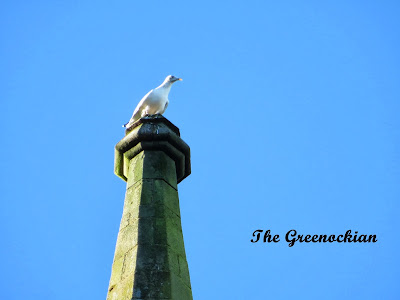For a shop to be overrun by rats is a major disaster,
especially if it is a grocer's shop.
That is exactly what happened to the premises of James Malloy Campbell
on West Blackhall Street in Greenock. This
unusual case was put before Sheriff Smith in October/November
1881. Mr Campbell had taken the lease on
the premises in 1878. This was his
second shop as a grocer and wine merchant , his other was in Roxburgh Street in
Greenock. All seems to have been well
until a drain burst which resulted in the rat infestation in his shop.
Since the premises had been in good condition at the start
of the lease, Mr Campbell decided to take his landlord (Thomas May Thorne) to
court for compensation of £90 in respect of the damage done to stock by the
rats. Goods in the shop and even in the
shop window had been eaten and destroyed as well as a boars head (value 5
shillings) Mr Campbell had used in his Christmas display.
As it was a condition of the lease that the premises be kept
in good repair, Mr Campbell claimed that he had tried his best to deal with the
problem himself by poisoning and trapping.
He stated that this had resulted in the death of a terrier dog (value
£5) by accidental poisoning. Six cats had
also perished, overcome by the sheer number of rats! He believed that the landlord should have
done more to deal with the cause of the problem.
The landlord claimed that on being notified of the problem
he had employed a builder, Mr Jamieson to make right the damage, which he had
done. This did not end the problem and
the local rat catcher was called in. Mr
Climie, "a man of skill in rat-catching, was actively employed for many weeks
... and was successful in killing many rats." However there seemed to be some disagreement between
the parties as to whether Mr Climie was given full access to the whole of the
premises by Mr Campbell - a trap stair from the shop to a cellar was not
mentioned and Mr Climie therefore contained his activities to the shop alone
and the rat problem continued. After a
while Mr Climie was called in again by the landlord and given access to the
whole premises - the problem was finally dealt with. I wonder if the shop was closed during all
this poisoning, trapping and other means of rat catching or where it was
"business as usual"!
On summing up, the Sheriff scathingly commented on Mr
Campbell's claim for compensation for his losses, stating that he was claiming
retail price for the goods not wholesale and that - "he wishes to convert these rats
into most valuable customers, and that at his landlord's expense. If such a claim were to be successful, where
is it to stop? This grocer goes on for a
whole year supplying these customers, the rats, on his landlord's credit and
unknown to his landlord. Why not pursue
the same system during the whole term of his lease?" Sheriff Smith.
This court case could not have been the ideal advertisement
for his business and needless to say, James Campbell did not renew his lease. The trade directory for1883 shows his with
just his original shop in Roxburgh Street.
However another grocer had taken over the West Blackhall Street premises.
The address given is "17 West Blackhall Street, known
as Havelock Buildings". In 1881 other commercial tenants of the premises were - a stationer, a chemist& druggist, an optician, a branch of the Post Office and the offices of a lawyer and engineer.
There is still a Havelock Building in Greenock,
but obviously street numbers have changed over the years. On the ground floor are commercial premises, with
apartments on the three floors above.
The Greenockian

















































